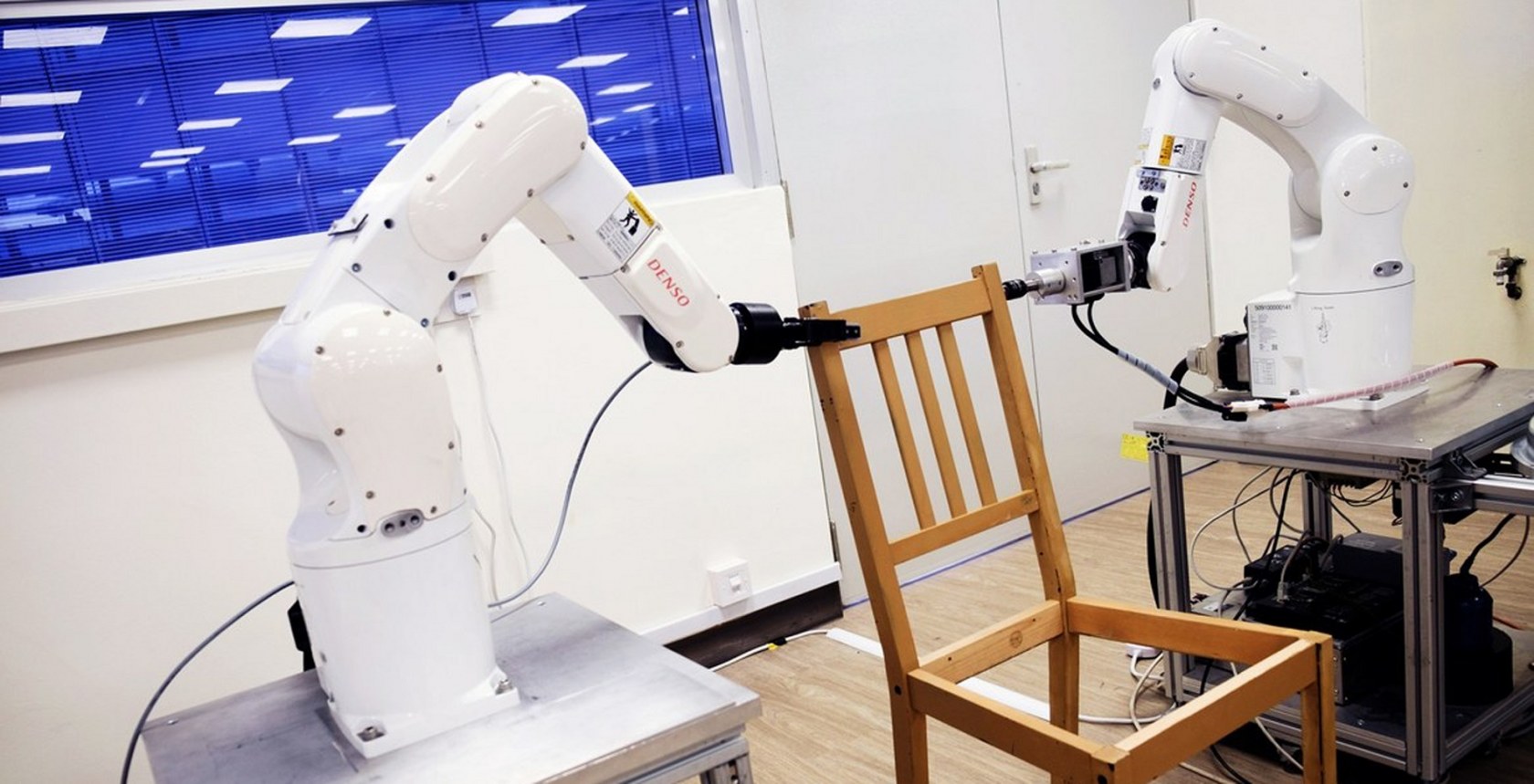In what could be yet another sign that machines are getting ever closer to a Skynet-style uprising, engineers in Singapore have created a robot that can assemble Ikea furniture quicker than most humans, and without experiencing a stress-induced fit of rage.
Researchers at Nanyang Technological University used off-the-shelf parts to create the robot, which consists of a 3D camera and two industrial robotic arms fitted with gripper and force sensors. It was able to put together Ikea's Stefan chair in about 20 minutes, though half this time was spent planning moves, with the actual construction taking just 9 minutes. Ikea says it normally takes a person around 10 to 15 minutes to do the same job.
The chair's pieces had to be laid out in front of the robot---asking it to perform the arduous task of unpacking everything is probably going too far. Each section is identified by the camera, and one arm holds a piece of wood while the other inserts the pins that (hopefully) keep everything together.
Much like when a human builds Ikea furniture, there were some failures before the robot managed to assemble the chair, including several attempts that resulted in crushed wood (when both arms had to grip one piece at the same time), dropped pins, and some incorrect moves.
The researchers had to program the robot with some basic instructions first, such as what the chair looks like and what order the parts are put together. "What it works out on the fly is how to do it," said lead researcher Quang-Cuong Pham.
The ultimate goal is to show the robot an image of a piece of furniture and let it figure out how to put it together entirely on its own. "But I would envision this last step not in the next probably five or six years or so," said Pham, who added that this is one activity that's unlikely to be become a robot-only task. "I don't think it is in Ikea's business model to have robots assemble their chairs," he said. "In the next 10 to 20 years, people will still be sweating over flat-pack furniture."
